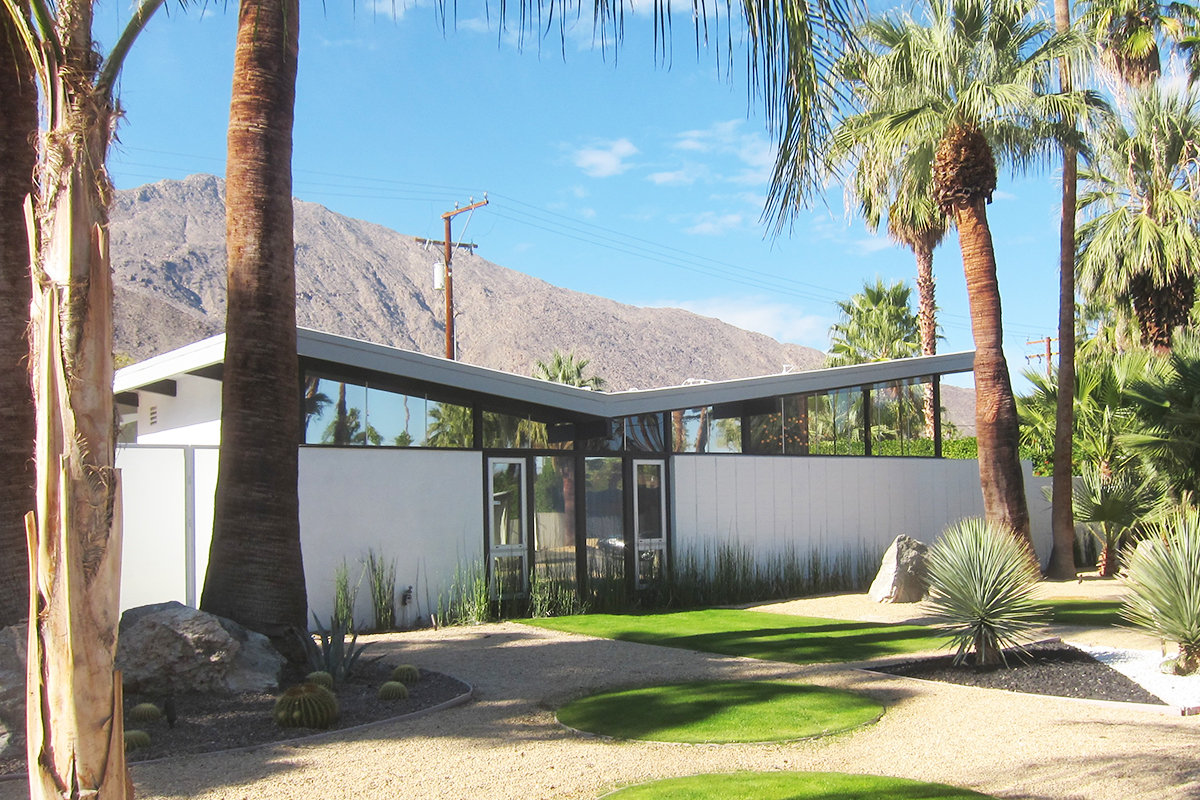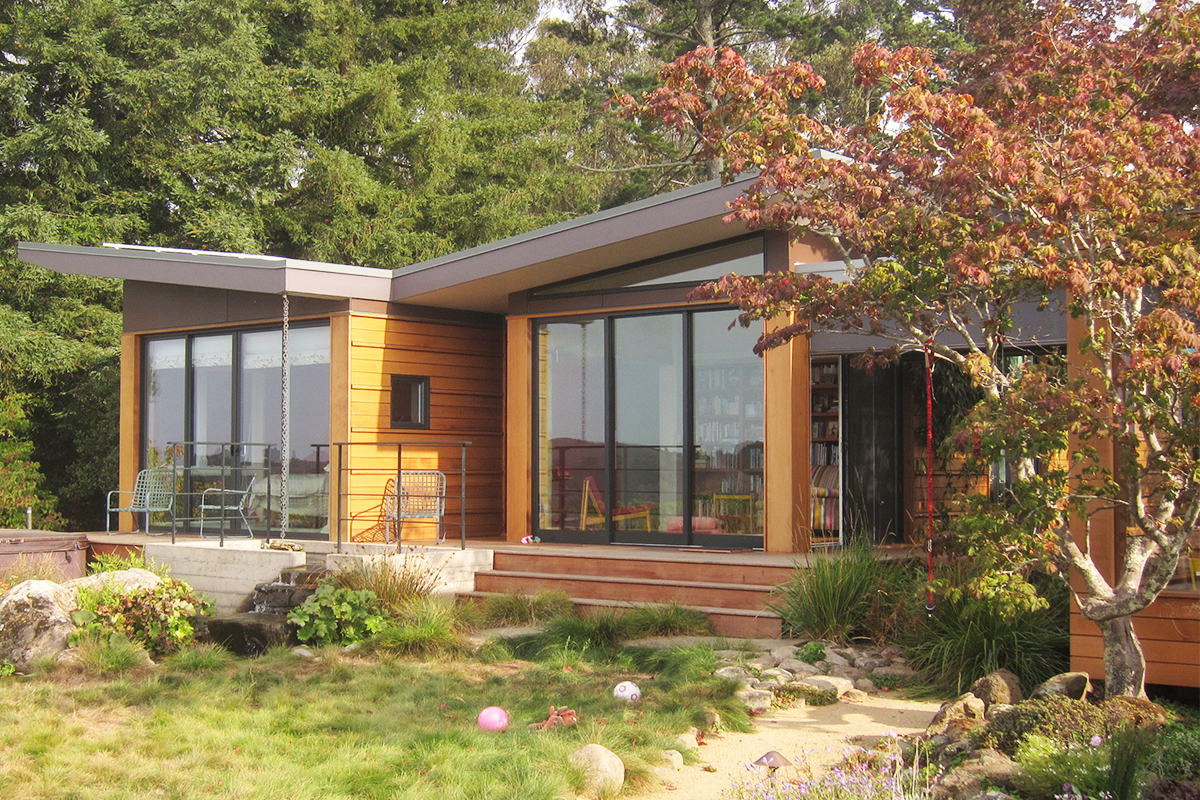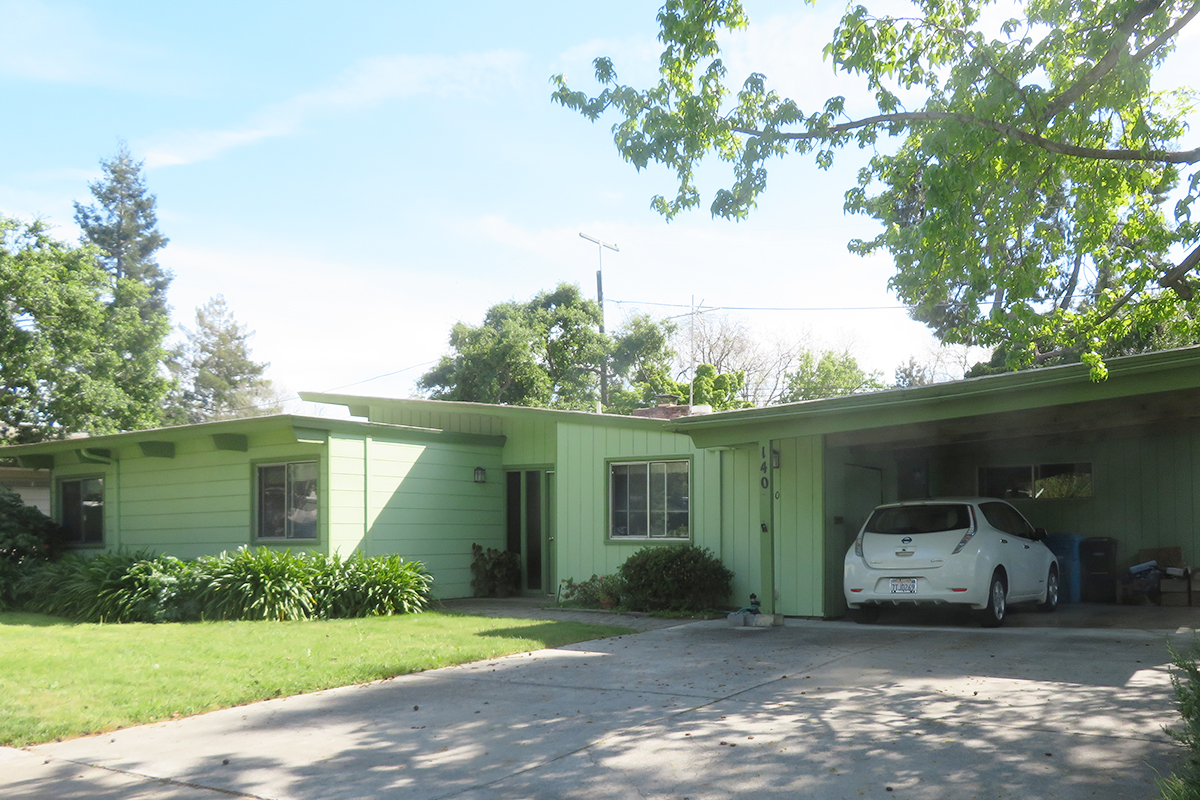Why Do People Love Butterfly Roofs?
 |
Does any roofline demand attention as insistently as a winged form reaching for the sky? There’s joy there and whimsy, and even functionality. In 'Return of the Butterflies,' as we revisit one of our most popular stories of the past, in the new summer ‘20 issue of CA-Modern magazine we explore the history of the butterfly roof, its re-emergence in recent years – and ponder why Joe Eichler built so few of them.
Back in the 1920s two of the founders of modern architecture independently designed butterfly roofed homes, Le Corbusier and Frank Lloyd Wright. Neither was built. It seems that the first modern butterfly roofed dwelling to get built arrived in 1943, in Brazil, to a design by Oscar Niemeyer.
The butterflies truly arrived as a flock in Palm Springs in the 1950s and 1960s, where architect Bill Krisel designed 400 to 500 of them for tract home builder the Alexanders.
The homes seem particularly appropriate for Palm Springs, with its aura of casual and carefree living.
Still, much as people love the shape, there are some who do not, the late Krisel has said.
 |
“It didn’t look like a house, some people thought,” Krisel remembered. “For most traditionally minded people a house has a gable roof. If they want to get modern, they’ll go for a flat roof with higher or lower sections of ceiling.”
He might not have been traditionally minded, but Joe Eichler also seems not to have been a fan of butterfly roofed homes. Although his architects designed homes with butterfly roofs for other developers, for Eichler they produced very few.
A. Quincy Jones and his firm, Jones & Emmons, who were Eichler architects, reveled in the form. Jones designed butterfly roofs in the late 1940s as part of the Mutual Homes Association neighborhood in the Brentwood Hills, and for Tiny Naylor’s coffee shop in Los Angeles in the mid-1950s.
Jones & Emmons also designed a lively collection of butterfly-roofed houses for the Navy’s Capehart Housing complex near Sacramento, today a lovingly landscaped rental neighborhood called the Arbors at Antelope.
 |
But for Joe, the butterfly was virtually no go. That’s why, whenever we spot butterfly roofs in Eichler neighborhoods, we take notice.
Sunnymount Gardens, a very early Eichler tract in Sunnyvale from the days before Joe hired architects, has several butterfly roofs.
More recently we spotted some of these winged roofs in another early Eichler tract, Atherwood in Redwood City. One of Eichler’s first tracts to be developed by real architects, the team of Anshen and Allen, the neighborhood won early attention.
Architectural Forum magazine awarded Eichler for subdivisions of the year in 1950, including Atherwood and three tracts in Palo Alto. Atherwood also won attention in the popular press, featured in an article in the November 1950 issue of Ladies Home Journal.
The Atherwood neighborhood, Eichler’s largest in Redwood City, with about 100 homes, has about ten with butterfly roofs. There are other jaunty rooflines as well, including many homes with single-sloped rooflines projecting over sections with flat roofs.




